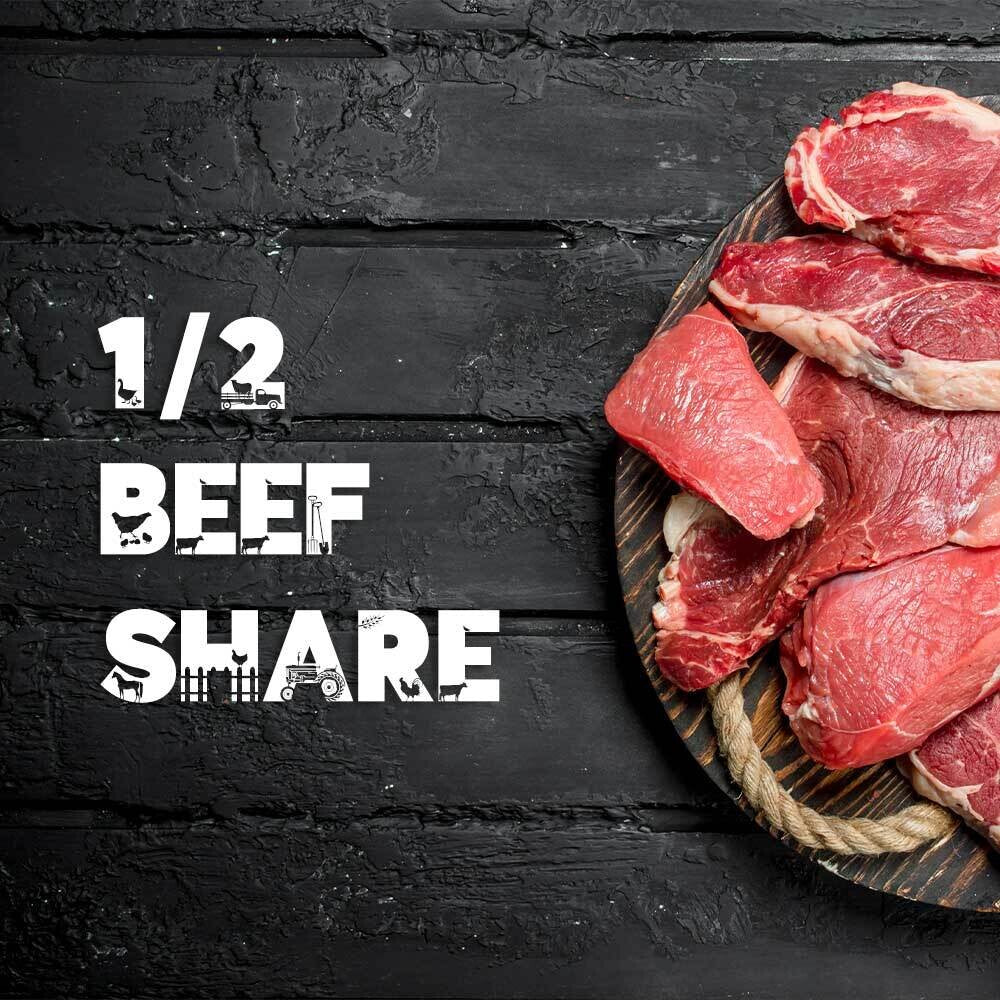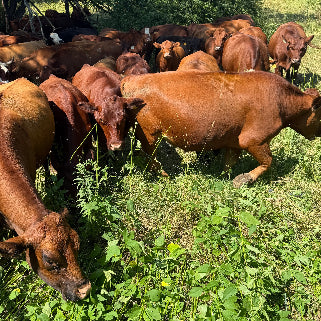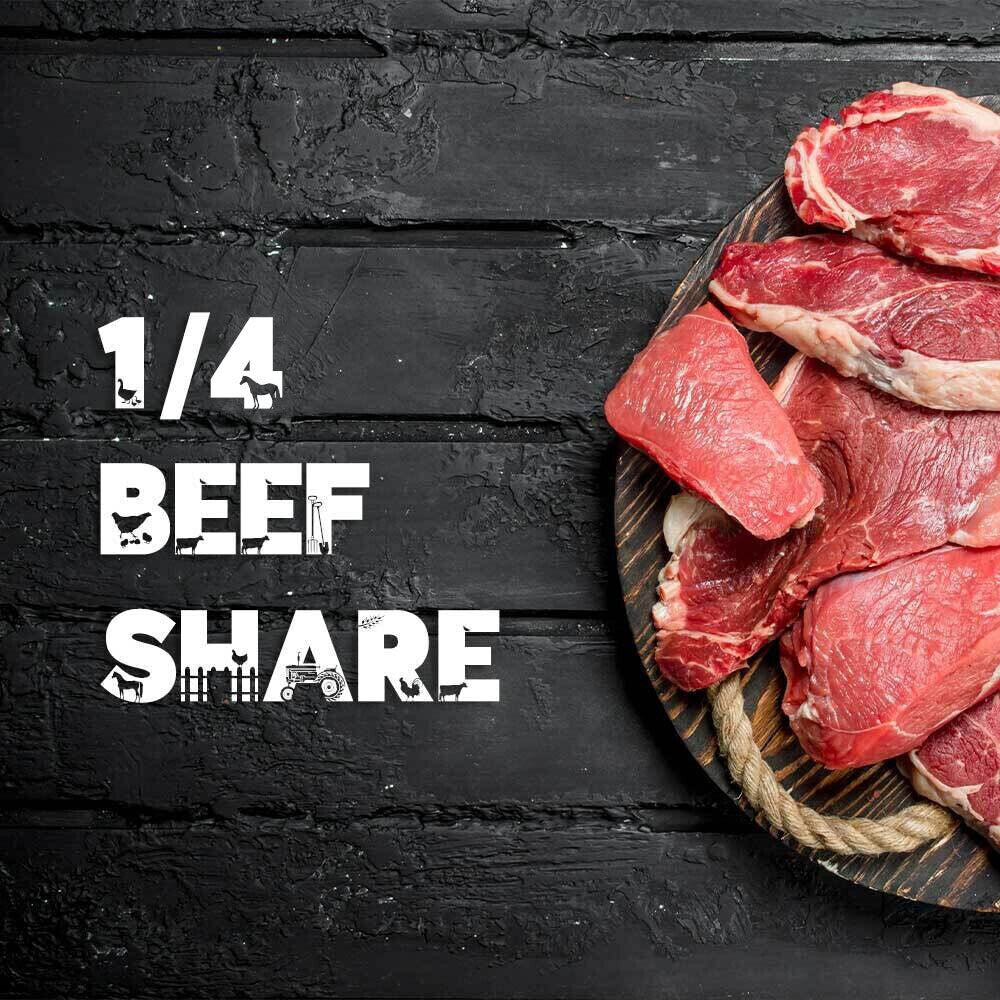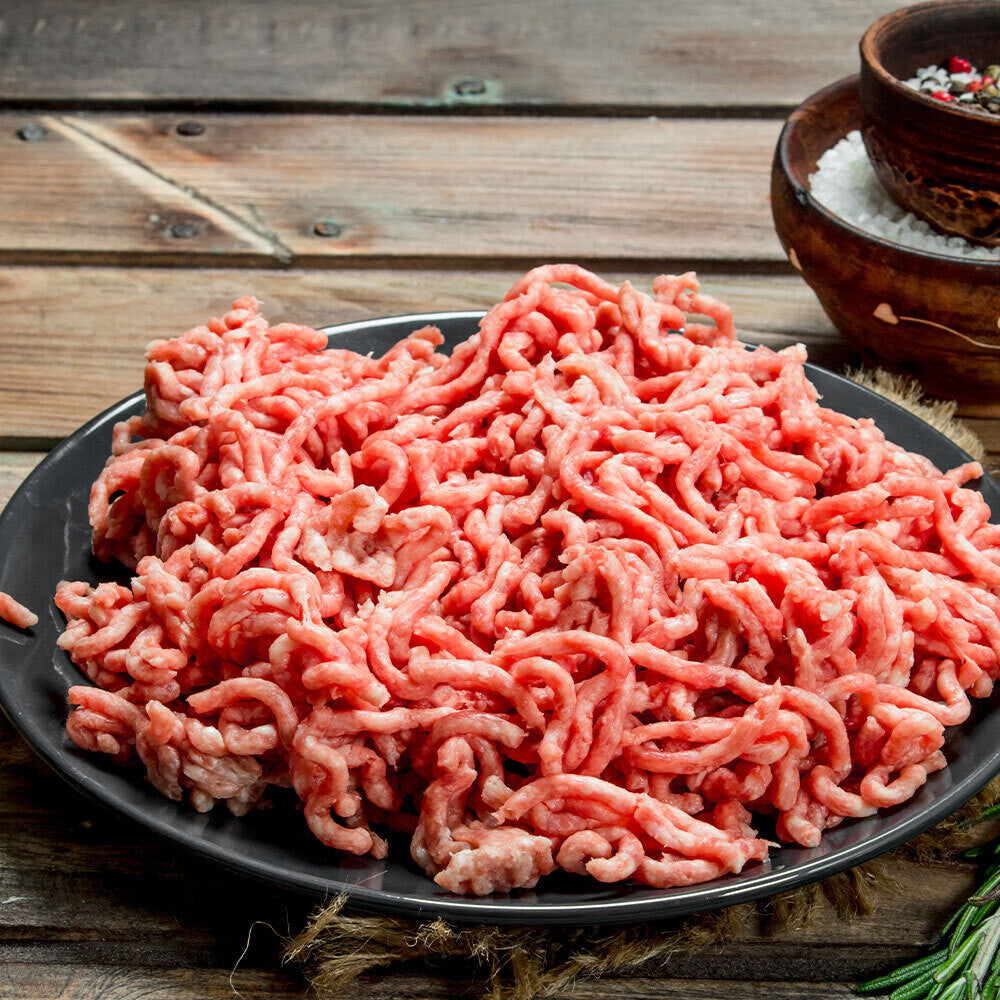
Why We Love Steak Oil as a Finishing Touch for Grass-Fed Beef
At Tyner Pond Farm, we’ve always believed in respecting the natural flavors of our pasture-raised, grass-fed beef. When an animal spends its life on clean, open pastures, its meat develops a deep, nutrient-dense flavor that doesn’t need heavy sauces or seasonings to be enjoyed. For this reason, we’re always looking for ways to enhance—not mask—the honest taste of our beef. Steak oil offers just that: a light, flavorful finish that elevates each bite, bringing out the meat’s richness without overpowering it.
Steak oil is essentially an infused olive oil that brings subtle notes of garlic, herbs, and spices to the table. It’s not a cooking oil, but rather a garnish that adds a final, aromatic touch once the steak is off the heat. The infusion of flavors in the oil complements the natural taste of grass-fed beef, enhancing its qualities in a way that feels just right. Here’s how we recommend using steak oil and why it works so well with the kind of meat we raise.
How to Use Steak Oil with Grass-Fed Beef
1. Finishing Drizzle: After your steak is cooked and has had time to rest, drizzle a small amount of steak oil over it. This adds a final layer of flavor, letting the herb and garlic notes blend with the meat’s natural juices. 2. Garnish with Sea Salt: For an even more refined touch, sprinkle some Maldon sea salt on top. The slight saltiness, combined with the rich oil, brings out the best in the meat. We don’t want to mask the flavor of the beef, only to complement it. 3. Light Basting: If you’re pan-cooking your steak, consider using the steak oil during the last minute or two of cooking. This can add a light crust and extra depth of flavor, especially when cooking at lower temperatures suitable for grass-fed beef. 4. Dip for Extra Flavor: You can also serve steak oil on the side as a dipping oil. This way, each bite of steak can be lightly coated, offering a burst of herbaceous flavor that brings out the quality of pasture-raised beef.Why Grass-Fed Beef Deserves This Simple Garnish
Unlike grain-fed beef, which can be heavily marbled and sometimes needs strong flavors to balance the fat, grass-fed beef is naturally leaner with a distinct taste that reflects the life of the animal and the health of the pasture it was raised on. Because of this, we treat each cut with respect. By using steak oil, we can highlight the beef’s natural flavor without altering it. Each ingredient in this oil was chosen to support the meat’s characteristics rather than cover them up. The beauty of steak oil is that it’s simple to make, can be stored for weeks, and offers a dependable way to give any steak a more refined taste. Here’s our adapted recipe, modified for ease, using dried herbs.Recipe: Steak Oil (Using Dried Herbs)
Ingredients
- 3 cups (720 ml) extra-virgin olive oil
- 1 tablespoon dried thyme
- 1 tablespoon dried rosemary
- ¼ cup (75 g) garlic, smashed and peeled
- 1 teaspoon peppercorns
- Zest strips from ½ lemon
- 1 bay leaf
Instructions
- In a medium pot, combine the olive oil, garlic, dried herbs, peppercorns, lemon zest, and bay leaf. Slowly heat the mixture, uncovered, to 200°F.
- Once it reaches temperature, remove from heat, cover the pot with the lid, and let it cool down completely to infuse.
- Strain the oil to remove all the aromatics, discarding the solids.
- Use immediately, or store in an airtight container or glass bottle (Mason Jar). The oil will last from 2 to 4 weeks in a cool, dark place, or up to 1 year in the refrigerator.
Bringing Out the Best in Grass-Fed Beef with a Thoughtful Finish
Here at Tyner Pond Farm, we know that quality meat begins with how we treat the land and our animals. Our grass-fed beef has a unique character born of careful, rotational grazing and a commitment to regenerative agriculture. Every bottle of steak oil we make or share with our customers reminds us of this: food should be simple, honest, and treated with care. Using steak oil as a garnish reflects our approach to farming—it’s a modest enhancement that respects what’s already good. When you try it, you’ll taste how it adds depth to your steak while keeping the focus on the flavors that come from a life well-lived on pasture.
Tags:
Previous post
Why I Don’t Recommend Modern Lodge Cast Iron and Why Griswold is Worth the Search
Next post















